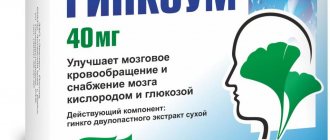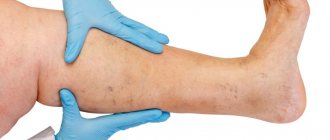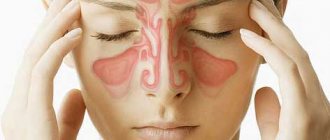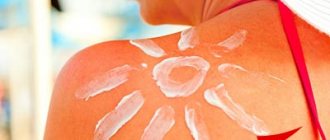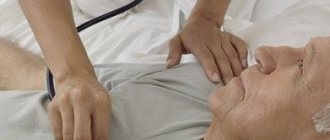Cephalgia - main symptoms:
- Headache
- Mood swings
- Weakness
- Dizziness
- Nausea
- Fever
- Vomit
- Speech Impairment
- Irritability
- Impaired movement coordination
- Drowsiness
- Loss of consciousness
- High blood pressure
- Low blood pressure
- Photophobia
- Malaise
- Decreased vision
- Increased photosensitivity
- Loud noise intolerance
- Feeling of head being compressed
Causes of headaches
An examination by these doctors is necessary in order to identify the presence of specific pathologies in certain areas of the head.
If cephalgic syndrome is detected in a child, then a pediatrician is added to the list of the above specialists. This doctor will be able to correctly identify symptoms that are related to age-related changes. Specialists check the condition of the blood vessels in the head using ultrasound scanning. If the result is negative, the patient is sent for magnetic resonance imaging. This research method helps to see the state of the brain more clearly. MRI is considered the most accurate way to find out about the factor that led to the appearance of cephalgia. However, in half of the cases the cause of the syndrome remains unknown, which proves the difficulty of diagnosing the pathology.
In order to carry out effective treatment and eliminate the symptoms of cephalalgia, the therapist must collect the most complete history
Cephalgia is perhaps the most common secondary syndrome - many different diseases are reflected by acute pain in the brain. Infectious, inflammatory, oncological diseases, biochemical metabolic disorders, bad habits and improper daily routine (especially in children) - all this can cause the development of acute cephalgic syndrome. Therefore, one of the headache classification systems is built depending on the area of primary pathology that led to the appearance of cephalgia.
The variety of causes has put the diagnosis of this syndrome in a rather difficult position. Accordingly, very often it is impossible to say with certainty what exactly caused cephalalgia in a particular person. The matter is complicated by the multifactorial nature of the syndrome - it is rare that cephalalgia (especially pronounced, with obvious symptoms and a chronic course) is caused exclusively by one pathology. Most often, a classic headache (or migraine) occurs due to various combinations of three factors:
- genetic predisposition;
- wrong lifestyle;
- various vascular and neuralgic diseases.
According to recent molecular biological studies, genetics plays a very significant role in the appearance of persistent pain in the brain region, especially in children. This is facilitated by hereditarily determined metabolic cycles of the main “carriers of feelings” - mediators, for example, histamine.
Bad habits, in particular smoking, as well as disrupted circadian rhythm, sedentary lifestyle, frequent work at the computer, lack of nutrition and fresh air quite often provoke the onset of cephalgic syndrome, especially in children. In combination with a hereditary tendency and in the presence of complicating diseases (even the simplest ones - for example, colds), cephalgia can reach a noticeable extent.
The immediate cause of frequent headaches is vascular dysfunction, which develops in the microcapillaries of the brain tissue. In particularly advanced cases, such disorders can lead to internal hemorrhage (stroke) or death of areas of the cerebral cortex (heart attack) due to insufficient blood circulation.
In order to carry out effective treatment and eliminate the symptoms of cephalalgia, the therapist must collect the most complete history, asking the patient in detail about the nature of chronic pain. After which a stage of physical research is recommended. Previously, the patient visits a neurologist, ENT doctor and dentist to identify specific pathologies of any organs of the head.
For children, it is necessary to visit a pediatrician, who will determine the symptoms associated with age-related changes. If there are extracts from the specified group of specialists, a person suffering from cephalgic syndrome of unknown etiology is sent for an electroencephalogram. Using delicate equipment, doctors record the smallest biocurrents of the brain. A failure in the phases of these impulses can be clearly defined as an indication of overt illness.
If the results are negative, the patient is sent for further research - first of all, the condition of the main blood vessels of the head is checked using ultrasound scanning. In the most unclear cases, it is necessary to use magnetic resonance imaging, which visualizes the state of the brain in more detail.
The brain and surrounding tissues react quite sensitively to many changes occurring in the human body. Many people wonder why this particular area is so sensitive.
This is due to the presence of a large number of pain receptors in this area of the body. It is inside the skull that the dura mater and its minuses, meningeal arteries, large arterial vessels, cervical spinal roots and intracranial nerves are located.
In addition, external receptors are also responsible for the perception of pain: arteries, aponeuroses, middle ear, tendons, skin, etc.
Headache can occur as a result of any pathology that actively affects the receptors and mechanisms that trigger the development of the disease. Most often, pain in the head is the only sign of a disease; in more rare cases, it occurs with other symptoms.
That is why it is very important to determine what kind of pain a person has: throbbing, squeezing, squeezing, sharp, dull or bursting.
Very often a person complains of a headache that occurs immediately after opening his eyes. In this case, other symptoms are observed that confirm the fact of vascular headache:
- vasodilation and redness of capillaries;
- redness of the throat and nasal congestion;
- swelling and heaviness of the lower eyelids;
- changes in blood pressure;
- cerebral vascular edema;
- arterial spasm.
Muscle tension headaches may include the following symptoms:
- feeling of pressure or squeezing of the head;
- irritation from bright light or loud music is less common;
- weakness or moderate headache.
Signs of the liquorodynamic type of cephalgia are:
- severe arching pain that intensifies during movement, subject to increased intracranial pressure;
- often throbbing pain due to low intracranial pressure.
Infectious-toxic headache often manifests itself along with other symptoms:
- vomit;
- weakness;
- sharp, and then continuous headache (gradually fades and resumes again);
- pain in the muscles;
- irritation from loud music and bright lights;
- feverish condition.
With neuralgic headaches the following are observed:
- short-term pain sensations, following one after another with short breaks;
- pain sensations are cutting, burning and piercing in nature;
- any movements of the head provoke a headache (swallowing, chewing, touching, etc.).
The diagnosis of cephalalgia is based on the analysis of the patient’s complaints. As already mentioned, headache is a symptom of a developing disease, so before treatment, a specialist identifies ongoing pathologies.
As a result of diagnostics, which involves laboratory tests and examination, the causes are identified and methods for eliminating them are selected. The most common disease that causes headaches is pathology of the cervical spine.
To reduce the risk of developing other diseases, a specialist must examine the neck and head for injuries. Internal organs are examined to prevent the development of acute processes.
First aid for a headache is provided only when its type is identified.
Thus, if pain is the result of stress or fatigue, then it is necessary to eliminate the factors influencing the causes. Often this is a bright light. And, of course, do not forget about healthy sleep, which often relieves cephalalgia syndrome.
Also a good remedy is a contrast shower and massage of the neck-collar area.
If it is not possible to take water procedures, you can wash your face, alternating warm water with cold.
The drug should be taken as a last resort, when the headache is truly unbearable. No-shpa, Combispasm, Spasmalgon and others are great for this.
If the headache does not go away within 12 hours and the symptoms worsen, you should seek help from a specialist. Nausea and photophobia may occur.
Causes
According to doctors, cephalgia (ICD code 10 R51 - headache) is currently almost the most common secondary syndrome. Most diseases are accompanied by headaches. Some pathologies can lead to the development of an acute form.
Recently, in our society, due to numerous lifestyle disorders, cephalgic syndrome is actively gaining momentum.
These include:
- infections;
- inflammation;
- oncological diseases;
- metabolic problems;
- incorrect way of life and non-compliance with the daily routine;
- smoking and alcohol.
Due to the huge number of causes that cause cephalalgia, it is difficult for specialists to diagnose the cause of the disease. It is difficult for doctors to determine what exactly caused the pathology. Quite often, cephalalgia is caused by several factors at once.
Migraine, or as it is also called - classic headache, can appear due to:
- burdened heredity;
- blood vessel diseases;
- neuralgic diseases;
- wrong way of life.
The development of this pathology is especially clearly manifested in childhood. Also, the child’s body reacts sharply to low activity, a sedentary lifestyle, poor nutrition and lack of oxygen. These factors, in combination with burdened heredity, lead to the rapid development of cephalgia. This disease must be treated. In extreme cases, it can lead to a heart attack or stroke.
Manifestations of cephalgic syndrome in vegetative-vascular dystonia
An equally common cause of cephalgia is vegetative-vascular dystonia (VSD). Headache with this disease can be expressed in different ways. This is explained by the condition of the vessels of a particular patient, which can either spasm (narrow) or expand.
The patient may complain of bloating or compression in the head area, a burning sensation, numbness, pulsation, heaviness or even emptiness, and quite often the location of the pain cannot be determined.
Cephalgic syndrome with VSD can manifest itself at night, especially in the predawn hours, subsiding by lunchtime and practically disappearing in the evening. In some cases, the dull pain gradually becomes throbbing.
Vasomotor cephalgia is diagnosed more often than other forms of pathology. It includes a combination of symptoms caused by muscle tension, stress, mental stress or abnormalities.
Painful sensations in this form are characterized by the following symptoms:
- bilateral tenderness;
- weak and moderate severity;
- the absence of a pulsating character is the main difference from migraine;
- does not get worse during the day without taking medications;
- increased symptoms of vasomotor cephalgia are possible only after physical exertion;
- the patient's appetite worsens, nausea and vomiting occur;
- photophobia and sensitivity to extraneous sounds appear;
- the duration of acute periods ranges from 1-2 hours to 5-7 days;
- the most sensitive areas to pain are the forehead and the back of the head;
- the chronic form of the disease is accompanied by squeezing sensations, as if a tight hoop was put on the head.
In addition to chronic, there is episodic cephalalgia of the brain. In the chronic course of the syndrome, pain appears about 12-15 days a month. In severe cases - even more often. In addition to the main symptoms, there are common ones: apathy, decreased activity, poor memory, deterioration of attention and loss of sleep. Sometimes weight loss is observed.
Chronic cephalgic syndrome can appear as a result of taking analgesics in the episodic form of the disease.
Vasomotor cephalgia is almost always accompanied by severe tension in various muscles: temporal, occipital, frontal. Sometimes a person's neck muscles hurt. The development of vasomotor cephalgia can be caused by various factors:
- drug abuse and the resulting addiction;
- mental illness;
- frequent strain on muscles or staying in uncomfortable positions;
- problems with the digestive system;
- environmental conditions and lifestyle.
The most common cause of vasomotor cephalgia is the abuse of painkillers.
Vascular cephalgia is accompanied by several factors that are not typical for other pathologies (if they are constantly present):
- the pain is located only in the occipital part, can be shifted slightly to the side;
- sharply increases during and after physical activity;
- occurs immediately after waking up.
The cause of vascular cephalgia, in contrast to vasomotor cephalgia, is considered to be increased pressure and other pathologies in the blood vessels. Severe headaches and seizures with convulsions, disturbances of consciousness are signs of severe hypertensive encephalopathy, which affects the brain.
The occurrence of pain in vascular cephalgic syndrome occurs according to different patterns. Most often, symptoms occur suddenly, resembling a sharp blow to the head. In other cases, the progression of symptoms is like waves.
Vascular cephalalgia of the brain is accompanied by pain that occurs as a result of stretching of the arteries and a pronounced pulse in them. The disease is rarely confused with migraine, since it is characterized by a distinct pulsation. With arterial hypotension, the condition may be accompanied by pain in the temples and crown of the head.
Cephalgia appears in children as a result of various diseases, accompanied by the following symptoms: pain in the abdomen, pain in the head on one side, nausea and vomiting, pulsating sensations, improvement after a short sleep.
Cephalgia of mixed origin responds well to treatment using folk remedies. You can take them for any other types of disease:
- warm mint tea and compresses on the head;
- lemon peels or cabbage leaves applied to the temples;
- infusion of St. John's wort;
- Calendula tincture eliminates migraines;
- foot baths with mustard and apple cider vinegar compresses help relieve pressure;
- Black tea with sugar and dark chocolate help with low blood pressure.
To prevent new attacks, it is necessary to treat concomitant diseases. If the patient suffers from persistent cephalgic syndrome, it is necessary to regularly visit the doctor, maintain an active lifestyle, and develop resistance to stress.
Cephalgic syndrome is a disorder that occurs against the background of organic disorders, infections and other diseases. It can be chronic or episodic, but in any case, you should not abuse painkillers.
Types and symptoms
Below are the most common cephalgic syndromes and their typical symptoms.
Migraine. This is usually a strong and persistent cephalgic syndrome. Migraines are periodic attacks of severe cephalalgia of pronounced intensity.
Migraine occurs with and without aura. Persistent severe cephalgic syndrome without aura is manifested by the following symptoms in adults:
- the pain is localized more often on one side of the head;
- throbbing pain;
- accompanied by nausea and vomiting;
- pain becomes stronger during and after physical activity;
- severe hypersensitivity: patients cannot tolerate loud sounds and bright light, they want to spend the time of the attack in a dark and quiet room.
- the attack lasts on average from 3-4 hours to 2-3 days.
Features of migraine in children:
- the headache episode is shorter than in adults;
- pain syndrome spreads to both sides of the head;
- the attack is accompanied by digestive tract disorders: nausea, vomiting, flatulence, stool or diarrhea.
Migraine with aura is characterized by the presence of mental and neurological disorders. Before a headache, patients report the following symptoms:
- simple visual hallucinations: flash of light, sparks;
- paresthesia: tingling in the arms or legs, numbness, feeling of goosebumps crawling on the skin;
- speech disorder.
The aura develops within 5 to 60 minutes. After the aura comes a migraine attack.
Tension headache. In terms of severity, this is a mild or moderate cephalgic syndrome. Tension headaches can be acute or chronic.
Frequent and acute attacks are manifested by the following symptoms:
- occurs suddenly more than once a month;
- lasts from 1-2 hours to several days;
- often bilateral, but can also be unilateral;
- manifested by a feeling of squeezing; patients describe this pain as if the head is being squeezed by pincers.
Chronic cephalgic syndrome manifests itself as follows:
- attacks appear more than 15 times per month and last at least three months;
- the pain is bilateral.
Cluster or cluster headache. This is primary cephalgia. It can be acute or chronic. Acute cluster cephalgia manifests itself in alternating episodes that usually last at least 6 weeks. Chronic cluster pain occurs rarely and manifests itself in single episodes.
Characteristics of cluster cephalgic syndrome:
- More common in men.
- The pain is localized on one side of the head, usually in the eye area.
- The pain syndrome is acute and pronounced, intolerable.
- An episode of cluster pain lasts from 15 minutes to 3 hours. On average, an episode lasts no more than an hour.
- Accompanied by autonomic disorders: tearfulness, dry mouth, drooping eyelids, redness of the eye, discharge of fluid from the nose.
- Accompanied by psychomotor agitation against a background of severe pain.
Headaches can be combined with other syndromes:
- Astheno-cephalgic syndrome. This is a combination of psychasthenic syndrome and headaches. It manifests itself as severe fatigue, exhaustion, irritability, photophobia, sleep disturbance, apathy and headaches themselves. As a rule, this is a mild cephalgic syndrome.
- Cephalgic vestibulo-atactic syndrome. This is a combination of headaches and neurological disorders: unsteadiness of walking, nausea, lack of coordination, vomiting, decreased concentration.
- VSD with cephalgic syndrome. This is a combination of headaches and symptoms of vegetative-vascular dystonia. The combined syndrome is manifested by nonspecific symptoms: irritability, sleep disturbance, trembling and coldness of the extremities, discomfort in the heart, panic attacks. Cerebral angiodystonia with cephalgic syndrome has the same clinical picture.
- Discirculatory encephalopathy with cephalgic syndrome. It is characterized by slow and progressive damage to the brain substance due to lack of blood supply and periodic headaches.
Most common symptom
Due to the numerous causes of cephalalgia and the subjectivity of the perception of this disorder, identifying reliable symptoms is somewhat difficult for the doctor. The patient needs to describe in detail and accurately all his sensations so that the primary source of cephalalgia can be determined.
Headache has the following characteristics of conditions and symptoms:
- localization of pain;
- short- and long-period fluctuations in the intensity of cephalalgia;
- the presence of secondary nervous disorders.
According to sensations, cephalgia syndrome can be confidently defined as diffuse (pain spreads evenly over a large volume of the head without concentration) or localized (cephalgia manifests itself in a certain concentration in some areas). The first type of chronic headache indicates nervous pathologies or mental overstrain.
If cephalgia tends to be localized, it means that the root cause lies in vascular disorders: very often this type of headache is characteristic of increased intraocular pressure (glaucoma). Expanding cephalgic syndrome is usually caused by manifestations of hypertension - primarily high intracranial pressure.
The periodization of cephalgic syndrome is divided into two levels. The first determines the presence of a pulsating chronic headache, which can sometimes coincide with the beat of the heart (especially typical for hypertension and other central vascular disorders). The second level determines how often an attack of cephalgia occurs and how sharply the pain syndrome manifests itself.
In vascular disorders, pain is associated with the occurrence of an imbalance in intracranial pressure, appears at a certain period and increases relatively sharply. If cephalalgia develops as a result of nervous overstrain and neuronal conduction disorders, then the pain appears at different times with a long period of increase.
Any secondary signs of headache are important for the correct diagnosis of cephalgic syndrome. For example, with a fairly acute course of cephalgia, a person develops a fear of bright light (photophobia) and sharp sounds (phonophobia). Such conditions are more typical for adults than for children. The body requires absolute rest and responds inadequately to stimuli associated with the activity of the central nervous system.
Doctors talk about the difficulty in diagnosing cephalalgia of the brain due to the large number of causes of the disease and inaccurate and vague symptoms. It is quite difficult for a specialist to find out reliable symptoms in a patient, which is associated with the patient’s subjective perception.
Headache has the following characteristics of conditions and symptoms: short- and long-term fluctuations in the intensity of cephalalgia
Cephalgic syndrome can be classified according to sensations:
- Diffuse. In this case, the pain spreads evenly throughout the head.
- Localized. The pain is more intense in a certain area or areas.
It can be caused by diseases such as:
- glaucoma;
- hypertonic disease;
- pre-stroke condition.
There are two periods of development of the syndrome. The first level is characterized by the presence of throbbing pain from which a person suffers for a long time. It develops into a chronic form. Quite often, patients say that the pulsation in the head coincides with the beating of the heart. At the second level, an attack of cephalgia occurs.
Doctors note that secondary signs are of great importance. For example, the appearance of photo or phonophobia, that is, fear of light or sound, indicates that cephalgia occurs in an acute form. Such difficult situations are more common among adults. With this diagnosis, the human body must constantly be at rest, and the nervous system reacts inadequately to all stimuli.
Cephalgia syndrome, according to sensations, can be confidently defined as diffuse or localized
Symptoms of cephalalgia
Doctors often have difficulty diagnosing the disease due to inaccuracy in symptoms.
However, if a specialist still manages to find out the reliable symptoms, then he will be able to prescribe treatment for cephalgic syndrome much more accurately.
That is why you should describe your symptoms in detail . For example, with hydrocephalic syndrome, in addition to severe headaches, blood pressure is disturbed; in the absence of treatment, vision and hearing may be impaired, and there is also a decrease in memory and concentration.
With dystonia, the vestibular apparatus is additionally affected, resulting in dizziness, unsteadiness of gait, and pressure surges. Vascular cephalgia is characterized by chronic headaches often accompanied by hypertension and increased heart rate.
Vascular cephalgia is characterized by chronic headache with increased heart rate
Let's take a closer look at the symptoms:
- If you suddenly experience painful sensations, the pain continues to increase, you feel nauseous and even vomiting, there is a changeable mood, an unstable mental state. All this may indicate a hemorrhagic stroke.
- If the pain intensifies with coughing or other strain, this may be a sign of cerebral edema.
- If you feel pain for a long period of time after receiving a traumatic brain injury, the possibility of a cerebral hemorrhage cannot be ruled out.
- If the pain you feel is pinpoint, severe, and comes on suddenly, this may indicate a ruptured aneurysm.
- When you feel severe muscle tension in the back of your head, your body temperature rises and all this is accompanied by a headache, this may be a sign of meningitis.
- When the limbs go numb, confusion occurs, hearing, vision and coordination of movements are impaired, and the possibility of a micro-stroke cannot be ruled out.
- If the headache “knocks in the temples,” this may indicate temporal arteritis, which is a harbinger of a stroke or even complete blindness.
Neuralgic form
Neuralgic cephalgic syndrome develops with the following symptoms: facial pain, paroxysmal sensations, unilateral development, certain areas that are most often attacked, pain radiates to neighboring areas.
Persistent cephalgic syndrome develops when the trigeminal or optic nerve is damaged. Less commonly, with damage to the jaw nerves. This pain occurs when brushing your teeth or eating food. In addition to pain, patients suffer from decreased sensitivity of the skin and facial muscles.
Treatment and prevention
Cephalgia is not a dangerous disease and is never fatal. Even in children, it can only cause discomfort. However, the tendency to become chronic can make life quite difficult for people with cephalgic syndrome. Treatment of headaches is divided into several areas depending on the medical approach:
- Relief or radical treatment of the underlying disease that caused the appearance of cephalgia.
- Drug treatment (most often the use of painkillers and vasodilators).
- Following a daily routine, diet, healthy lifestyle, recommendations from a physiotherapist are especially important for children.
- Alternative medicine.
If cephalgic syndrome is caused by a serious systemic disease, then with parallel pain relief it is necessary to carry out a course of alleviating therapy for the underlying disease. In case of complicated hypertension, the patient is prescribed IVs and a number of drugs to radically eliminate high blood pressure.
Various painkillers help well with acute forms of rare cephalalgia, but it is necessary to note the danger of prolonged drug treatment of headaches with potent drugs, especially for children. After long-term use of such drugs, reverse-induced cephalalgia may develop, which will be caused by the drug itself.
If cephalgic syndrome occurs due to nervous disorders, then you should thoroughly change your lifestyle in accordance with the recommendations of doctors. Clean fresh air, proper nutrition, adherence to biological rhythms and an adequate balance of work and rest allow you to get rid of cephalgia relatively quickly.
Prevention of the appearance of cephalalgia comes down to maintaining an adequate lifestyle, proper alternation of different types of activities, and developing resistance to stressful situations. For children, it is especially useful to provide a complete set of vitamins in food. If you experience headaches of an unclear nature, you should definitely see a doctor for timely diagnosis and treatment.
There are currently several types of treatment for this disease:
- cardinal,
- medicinal,
- alternative,
- maintaining a correct lifestyle.
The syndrome can be caused by a serious illness. In this case, radical treatment is applied. The main goal is to stop the underlying disease that led to the development of headaches. For example, if a person has hypertension, the doctor prescribes IVs and medications that should eliminate high blood pressure.
If a specialist sees pronounced cephalgia, he can prescribe medications to the patient to dilate the vessels supplying the brain. Properly selected drugs bring significant relief to the patient.
In the acute form of cephalgia, the patient is prescribed painkillers. Experts warn that treating children with potent drugs for a long time can have a bad effect on their body. There are cases when long-term use of such medications provokes the development of cephalgic syndrome - induced cephalgia.
Prevention is very simple: stick to a daily routine and correctly alternate the phases of work and rest. You also need to develop resistance to stress. Taking vitamin complexes will not be superfluous.
Cephalgia of the brain - what is it?
Pain in the head - cephalgia - can occur as an independent pathological condition, a sign of a physiological malfunction or disease. No one is immune from the development of this symptom, but some people are predisposed to it due to the structural features of the brain and the specifics of the vascular network. The risk of a problem increases when living in unfavorable conditions, under the influence of external stimuli, and refusal of a healthy lifestyle.
You will learn more about the types and causes of cephalalgia here.
Depending on the causes, cephalalgia of the brain can manifest itself in different ways, which makes the diagnosis process easier. It is important to understand that when a headache occurs, you should not immediately suspect damage to the brain substance. It consists of nerve cells and does not contain pain receptors.
The appearance of cephalgia is a consequence of damage to blood vessels, nerve endings, bones, soft tissues, muscles and other structures of the skull.
Tension cephalalgia
Let us repeat that cephalgia is the most common symptom. It accompanies the consequences of bad habits (smoking, alcohol abuse, overeating, etc.), and developing infectious, inflammatory or oncological diseases. All this can provoke persistent cephalgic syndrome.
And since there are many reasons, not a single doctor would dare to immediately determine what exactly was the basis for the patient’s constant headaches. Moreover, cephalalgia is often the result not only of individual pathologies present in the body, but also of a combination of a number of factors. For example, classic migraine is a consequence of genetic predisposition, poor lifestyle, and the patient’s vascular or neurological diseases.
As can be seen from all of the above, cephalgic syndrome, despite its prevalence, is a rather serious pathological condition. It requires mandatory consultation with a specialist in order to prevent serious consequences that can develop as a result of circulatory disorders in the brain.
The appearance of persistent headaches, which are poorly responsive to medications, occur suddenly and last for a long time, should alert the patient. Behind this may lie the onset of a serious illness, which means putting it off and waiting for everything to go away on its own is frivolous and dangerous. Only timely contact with a specialist will allow you to recognize the disease and stop its development!
A form of tension cephalalgia is found in 95% of cases in people aged 25 to 30 years. It can be episodic or chronic. In the second case, it occurs more than 10 times a month. The duration also depends on the individual characteristics of the body and can range from 1 hour to 1 week.
Mental overload is the main factor in persistent cephalgic syndrome. This is influenced to some extent by the patient's character. With suspiciousness and anxiety, the frequency of attacks increases. Main symptoms:
- it is difficult to determine the location of the pain;
- there is a feeling of squeezing of the head;
- the pain intensifies if you wear a hat or other headgear.
Types of cephalgic syndrome
Cephalgia is mainly observed in people who suffer from chronic fatigue. But we should not discount more serious diseases, the symptoms of which are headaches. Currently, cephalalgia syndrome has a specific classification.
The division into groups is made based on the location of the pain and the causes contributing to it.
Thus, headaches can be of the following types:
- Vascular headache. Occurs when blood vessels overflow or are overstretched. Pain sensations can be rhythmic or pulsating.
- Cephalgia of muscle tension. Basically, this is a monotonous pain sensation in which there are sensations of squeezing, tightening or squeezing.
- Liquorodynamic headache. It is observed with increased intracranial pressure. At the same time, bursting pain is felt.
- Infectious-toxic pain. The cause of this type of syndrome is mainly a decrease in immunity and the introduction of harmful microorganisms into the human body.
- Neuralgic headache. It is expressed in the form of short-term attacks, which are preceded by some events: washing, swallowing, shaving and others.
Cephalgia mainly develops due to circulatory disorders in the brain tissue. Painful sensations occur when the lumen of the vessel expands, followed by a change in blood pressure. Also, spasm can cause discomfort.
Infectious-toxic form
Cephalgic syndrome develops in response to current infections in the body. This occurs due to excessive accumulation of toxins in the body, they have a bad effect on the nervous system and cause various pains. In this case, the sensations do not have an exact location, but patients feel pulsation, pressure and severe fever.
Infectious pathology is characterized by persistent cephalalgia syndrome, as well as:
- alcohol or drug poisoning, food intoxication;
- inflammation in the ENT organs;
- other infectious pathologies;
- the patient is concerned about loss of strength and malaise;
- arthralgia, myalgia, irritability develops;
- Nausea and hyperthermia may occur.
Medicines rarely work for infectious diseases.
Liquorodynamic form
Liquorodynamic persistent cephalalgia occurs due to cerebrospinal fluid. It accumulates in the brain space and is poorly drained. Inflammation and injury are considered to be the cause of the accumulation of cerebrospinal fluid, as a result of which it stagnates and is not drained. Causes of the disease: trauma, cysts, impaired venous outflow, malignant tumors, hydrocephalus, injuries to the meninges.
Very often, cephalalgia of this nature develops with hydrocephalus (dropsy) of the brain.
How to get rid of pain
The main method of treating cephalalgia is taking analgesics and hormonal drugs. Often, you can eliminate pain yourself with the help of cold wet compresses, brewed herbs and hot foot baths. Such methods help with circulatory disorders.
If the cause of the headache is vegetative-vascular dystonia, the use of sedatives and stimulants is common. Additionally, physical therapy, replenishing the body with vitamins and baths are recommended.
If you experience a muscle headache, which is quite common with sinusitis, neurosis, osteochondrosis and other diseases, you will need medication, massage, manual therapy and gymnastics. The use of diuretics is encouraged.
The symptoms of neuralgic headache are eliminated by analgesics, but there are cases when they remain inactive. If this happens, you should resort to sedatives: physiotherapy and novocaine blockade.
If cephalgia is caused by long-term use of medications, you should stop the course of treatment or replace the provoking drug with another. Basically, such measures help get rid of headaches.
In children, treatment is carried out according to several principles: treatment during the interictal period and its relief. At the same time, all factors that can provoke cephalalgia are removed from the child’s environment. In this case, it is mandatory to use all preventive measures.
If a child experiences attacks of pain quite often, drug treatment will be required. Experts recommend taking painkillers only when there is an increased level of discomfort.
Treatment of a child begins with the choice of drugs, and in fact there are not as many of them as for the recovery of the older generation. Therefore, during the treatment period, analgesics, non-steroidal anti-inflammatory drugs and combination drugs containing caffeine are used.
If headache attacks are moderate or intense, it is recommended to take Paracetamol no more than 15 mg/kg. Phenacetin, Ibuprofen and Naproxen are also effective.
Symptoms and diagnosis of headaches with NPNMC
When diagnosing headaches in such patients, one must take into account its obligatory combination with at least one more symptom of vascular origin. Most often, headaches are combined with dizziness, noise in the head and (or) ears, memory disorders, decreased performance, sleep disturbances, and a feeling of lightheadedness.
As already noted, headache in combination with other subjective manifestations occurs during intense, most often mental work associated with significant fatigue, especially if it is performed under hypoxic conditions. As you continue to work, it increases, a feeling of lightheadedness and nausea appear. The connection of headaches with professional stress, for example, in people with a nervously stressful nature of work, is also manifested in the fact that health worsens towards the end of the working day and in the last days of the week.
An important diagnostic criterion that makes it possible to associate cephalgia with NPNMC is their complete independent regression after rest. At the same time, all other painful sensations disappear. The state of health becomes normal after a full sleep and a change in activity.
However, in order to make a diagnosis of NPNMC and associate the patient’s headaches with it, it is necessary to take into account a certain frequency of episodes of cephalgia and the duration of the disease. Headaches and accompanying other subjective symptoms must recur at least once a week for at least three months.
Headaches with NPNMK are very often combined with symptoms of systemic vascular damage. First of all, these are complaints of pain in the heart area, palpitations. Identification of these complaints, as well as other painful sensations accompanying cephalgia, requires, as a rule, careful active questioning of patients, a detailed, scrupulous collection of anamnesis.
When characterizing headaches with NPMC, one should note their significant polymorphism. By nature they can be pressing, squeezing, bursting, accompanied by a feeling of heaviness and discomfort in the head. Their localization is often local, spreading to the parietal and temporal regions or to the occipital area. However, diffuse headaches often occur. The duration of such cephalgia is several hours.
During an objective neurological examination, as already noted, no pathology is determined. A general clinical examination of the patient should be aimed at identifying signs of damage to other parts of the cardiovascular system, characteristic of atherosclerosis or hypertension.
An important role in determining the nature of headaches in the early stages of cerebrovascular diseases is played by the study of the emotional and personal characteristics of patients, the functions of memory and attention. With headaches associated with NPNMK, anxiety develops in the emotional and personal sphere, and in contrast to neuroses, personal anxiety predominates over reactive, anxiety-depressive tendencies increase, but again with the dominance of anxiety, a previously uncharacteristic lack of self-confidence and pessimistic behavior appear. perspective assessment, low self-esteem, increased concern about one’s health. Attention decreases and memory deteriorates. An objective indicator of these disorders can be data from neuropsychological testing (multidisciplinary personality study, Spielberger, Littman-Schmishek questionnaires, Schulte tables).
Additional diagnostic methods in case of suspected connection between headaches and NPNMK are aimed at identifying cerebrovascular defects of atherosclerotic and hypertensive nature. An objective criterion in this case is the identification of cerebral dyscirculation and signs of damage to the great vessels of the brain.
The main hemodynamic parameters characterizing NPNMK are a moderate decrease in cerebral blood flow velocity, predominant in the main type vessels and primarily in the vertebrobasilar region. For the diagnosis of such hemodynamic defects and clinically asymptomatic stenoses of the main arteries, of course, ultrasound methods for studying cerebral blood flow, in particular, transcranial Doppler ultrasound, are of greatest importance.
Rheoencephalography (REG) acquires a certain significance in determining the cause of headaches with NPNMK. Background REG is characterized by a change in the waveform of the atherosclerotic or hypertensive type, its amplitude decreases, and signs of vasoconstriction are recorded. The diagnostic capabilities of the method increase significantly when performing functional tests. A pharmacological test with nitroglycerin reveals torpidity of vascular tone. Typical deviations from the normal response are identified when modeling various types of activity, especially mental and emotional. They are expressed in increased cerebrovascular resistance. In this case, the vasospastic reactions of large arteries are minimal, and small vessels react with excessive dilation.
Atherosclerotic and hypertensive vascular damage can also be detected by ophthalmological examination. In this case, it is not so much the condition of the fundus vessels that matters, but the microscopy of the conjunctival vessels.
Laboratory confirmation of NPNMK as the cause of headaches includes the study of the lipid profile, the hemostatic system, and the rheological properties of the blood, which makes it possible to identify changes characteristic of atherosclerosis and hypertension.
Treatment of the disease
To eliminate the acute course of the disease, medications are used. For long-lasting results, cephalgic syndrome must be treated with additional methods. Thus, doctors recommend normalizing diet and daily routine, including moderate physical activity and using safe traditional medicine. Medicines prescribed:
- Painkillers. Necessary for stopping acute attacks. Quite powerful medications are used to treat the syndrome: Pentalgin, Solpadeine, Panadol. Analgin preparations should not be taken for bronchospasms and bleeding.
- Blood pressure medications. For low blood pressure and vascular cephalgic syndrome, Eleutherococcus extract and Pantocrine are prescribed. If you are concerned about high blood pressure, you need to relieve spasms with the help of "Curantil" or "No-shpa".
- Drugs for VSD. If the treatment of cephalgia requires the elimination of VSD, then first you need to try walking down the street and taking a contrast shower. If the actions do not help, use “Furosemide”, “Eufillin”, “Caffeine”.
- Migraine tension cephalalgia. To eliminate the first disease, take Paracetamol, and if the pain appears from tension, use analgesics.
- Eliminate tension. Muscle relaxants are also used to combat tension: Milagin, Dillacin, Clindamycin.
Physiotherapeutic procedures effectively eliminate the symptoms of the disease. For example: cervical massage, baths with pine branches and essential oil, radon baths.
Treatment
If cephalgic syndrome develops with VSD, you must consult a doctor for examination and prescribing effective therapy. To find out what type of disease is manifested in the patient, the doctor prescribes an examination, which includes:
- CT scan;
- MRI of the head and neck area;
- encephalogram;
- fundus examination;
- measurement of intraocular pressure;
- angiography of cerebral vessels;
- laboratory tests of blood and urine.
Treatment of cephalgia with VSD depends on the type of disease. The diagnosis is made by a doctor after research. If cephalgia occurs due to VSD, the doctor may prescribe sedatives, valerian, hawthorn to calm the nervous system. Vitamins and physiotherapy are also prescribed.
For the vasomotor type, physical therapy, massage, and swimming are recommended. At the same time, you need to follow a daily routine, normalize sleep, and protect yourself from stress.
Most often, patients are prescribed the following treatment:
- taking medications;
- aromatherapy;
- physiotherapy;
- manual therapy;
- physiotherapy;
- osteopathy;
- reflexology;
- surgery.
To prevent the disease, you should lead a healthy lifestyle, maintain proper sleep and wakefulness.

